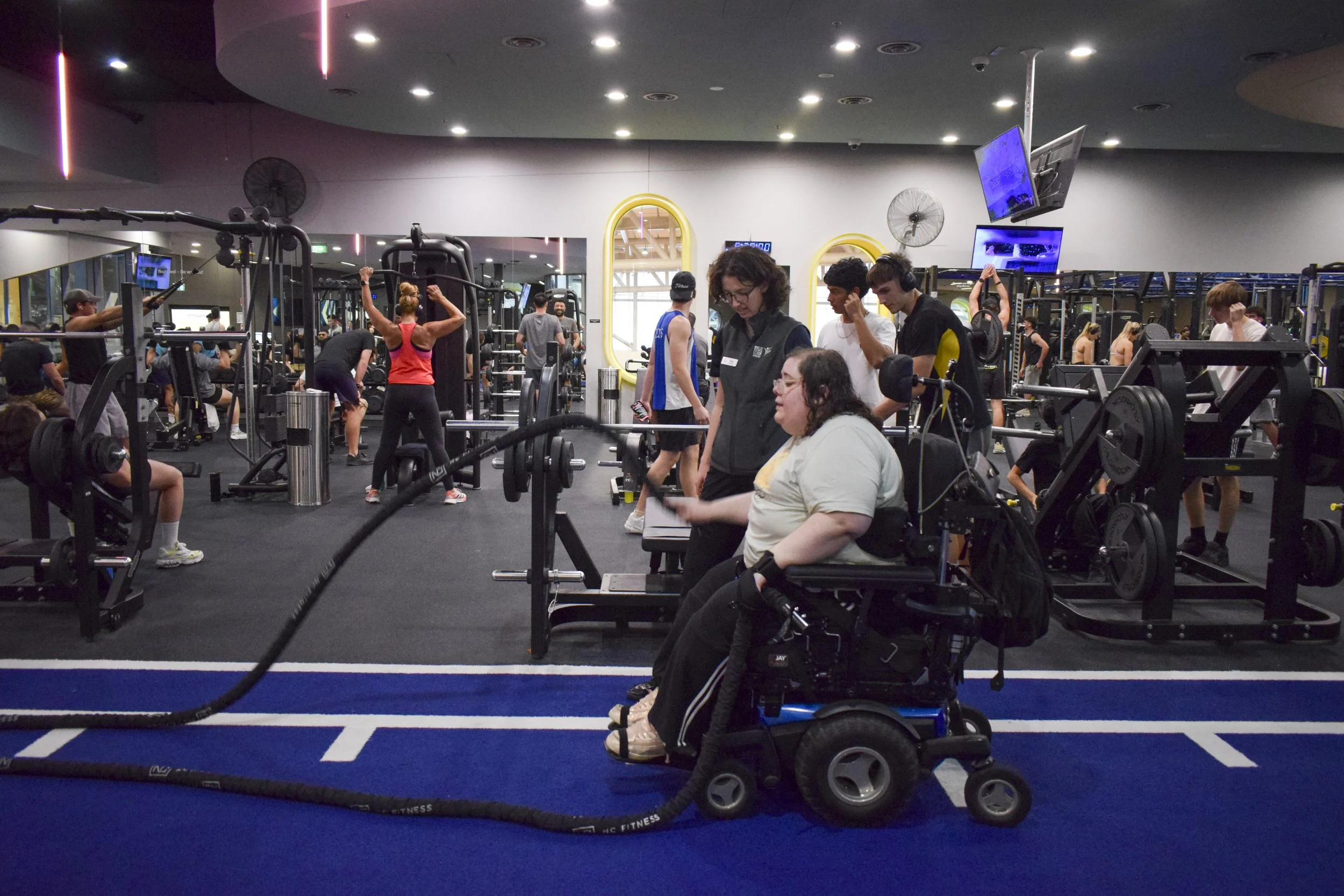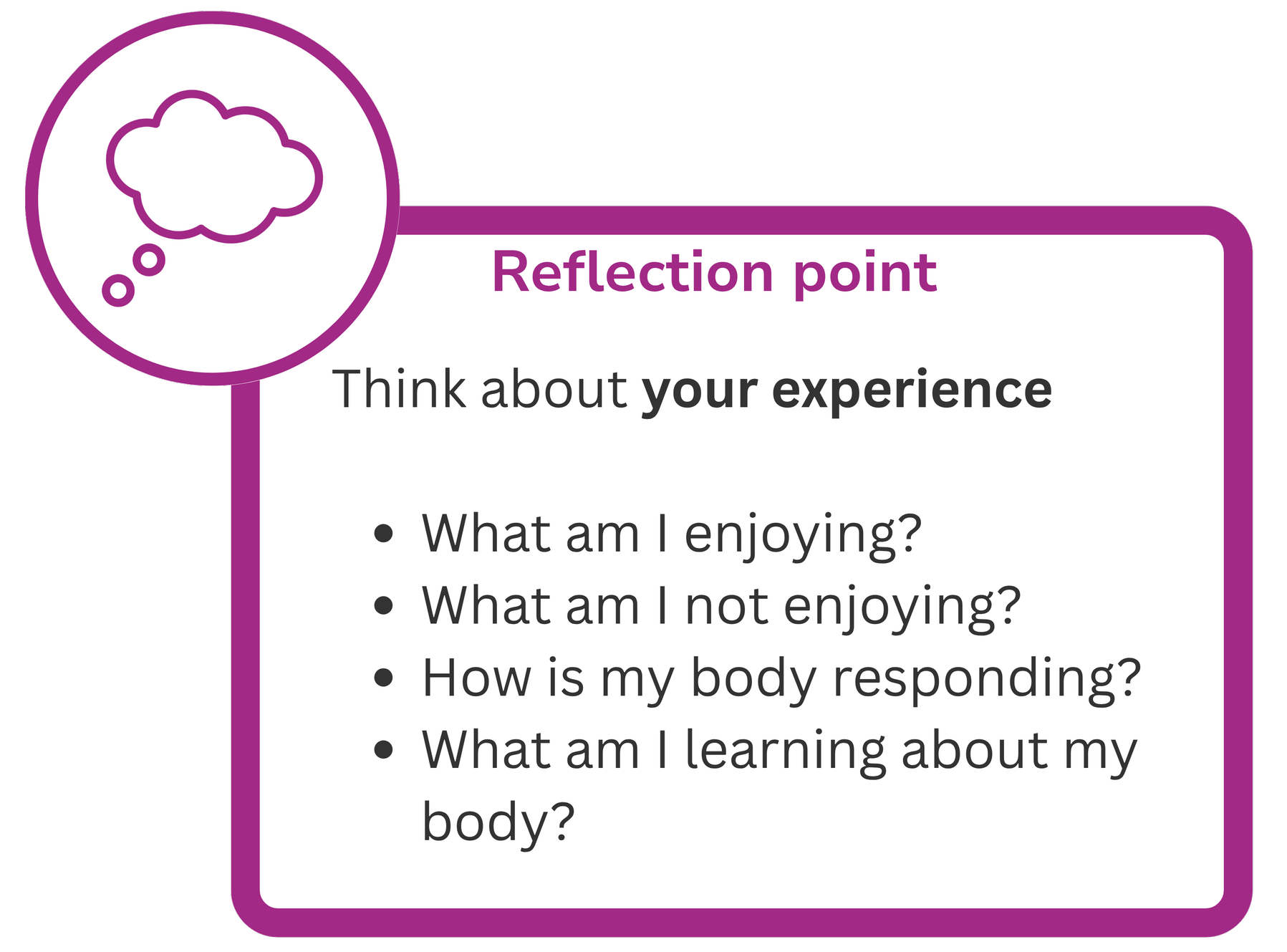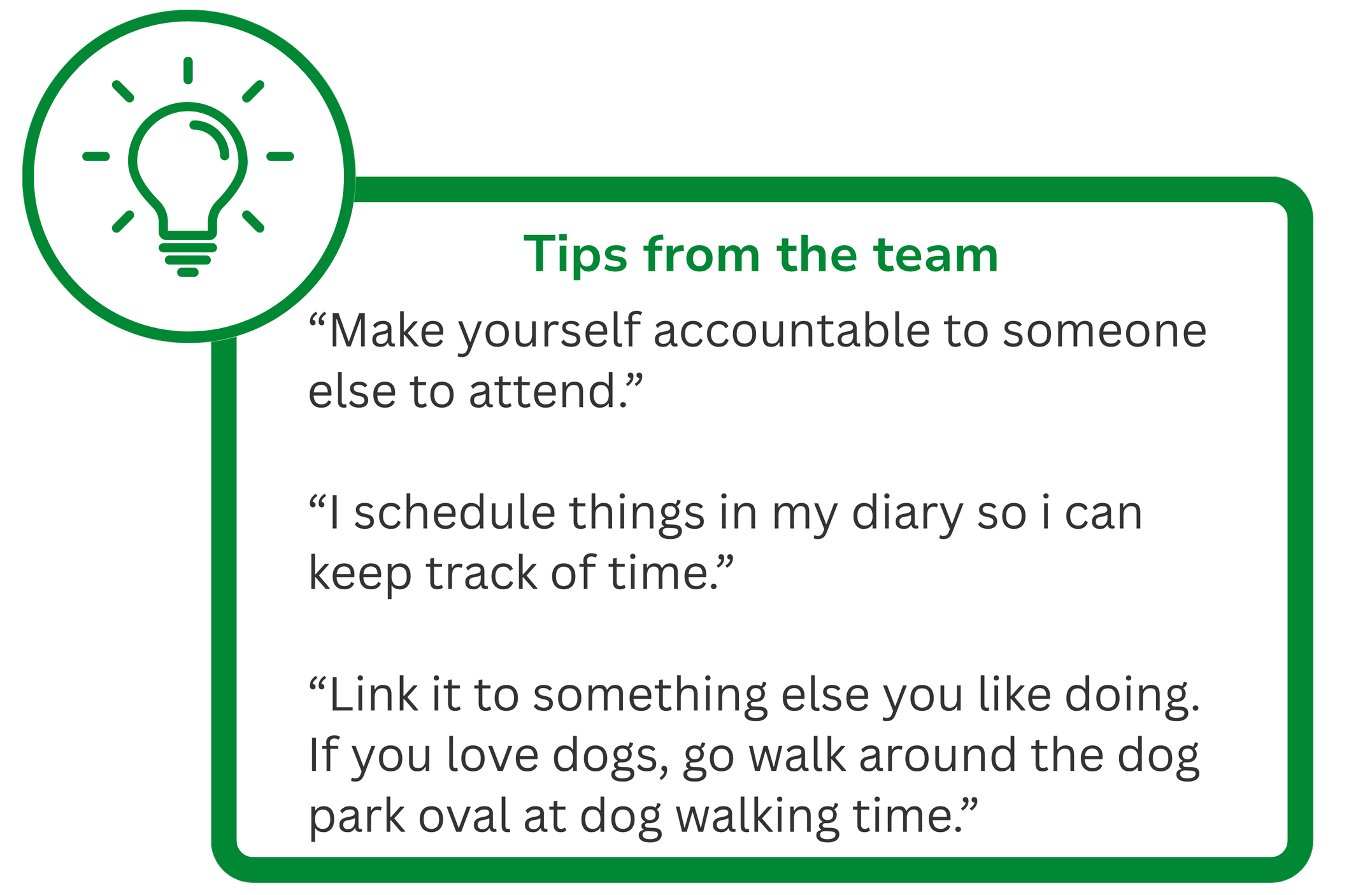
Settling in
The aim of this section is to learn about what the first few months of a new physical activity might feel like, and think about ways to look after your body while you’re settling in and building a rhythm.
Starting a new activity takes extra time and energy.
When you’re starting a new activity or routine, it can be helpful to:
recognise it takes time to settle in
work out how your body responds to this new activity or routine
check in on how its going
speak up when things aren’t going to plan
“This period of time can be frustrating, but it can also be exciting as you learn more about yourself, what you like, and what your body can do.”
- Freya
Learning new physical skills takes time.
And so does getting used to a new environment, and the new people in it.
There might be a lot of new things for you to take in and get used to.
After doing a few sessions of your new activity, you will probably start to have some idea of what is working well and what might need to change.
When finishing school we realised we needed to pre-plan and prioritise physical activities and how best these would fit into the week, getting to the gym twice a week and to wheelchair basketball.
We needed to have these as priorities and plan them out to allow for rest days and fit in other activities around them.”
— Parent of a Young Adult
Building the routine
Having a routine can be really helpful to make sure that you fit in your physical activity.
When it’s a regular part of life, you build momentum.
But rigid routines might feel restrictive and not flexible to your needs.
You might like to think of it as finding a ‘rhythm rather than routine’ - trying to plan for regular physical activity, but being flexible as things change.
For example, you might book in a pool or gym session every Tuesday for an hour. But some weeks when you are more fatigued, you do more of a relaxation session, or a shorter session.
Remember - the plan and routine at the start is not what you are committed to forever, but may help you get started. Once you get going, you can always review and change if something isn’t working. There will be more information on this in ’Checking in’.
At the beginning I definitely had nerves and apprehension about going to the gym but having a plan and commitment to my EP made sure I gave it a go…and now cant keep me out, it’s my favourite places to be.
- James
How long will it take to settle in?
Settling in usually takes at least a few sessions but may take a few months.
When you are learning new skills, we know that it takes about 6 to 12 weeks to really get the hang of things and start to do tasks more easily.
You might start noticing after a couple of months that you’ve found an easier rhythm and are able to get into more of a flow.
You are likely to understand more specifically what works well for you and what doesn’t. Some of these things are harder to figure out when an activity is totally new.












